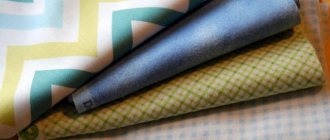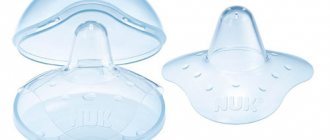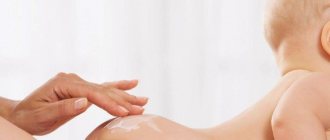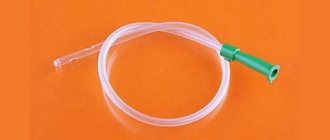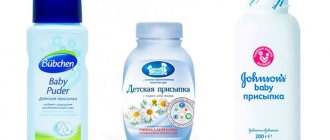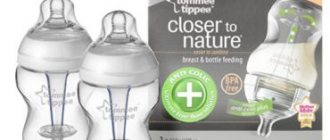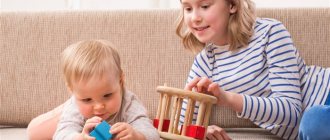Baby powder is used as a hygiene product for young children. It absorbs moisture, prevents diaper rash and abrasions on the skin of babies, and reduces inflammatory processes.
Mom wants to buy only the best and safest for her baby. But how can you choose from the variety of caring products offered that you will like and suit you?
First, you need to know what kind of powders there are.
All of them are divided into two types:
- Dry or powdery.
They are the finest powder, which includes talc, starch, zinc oxide and caring components. Dry powders are better dosed and applied in a thin layer. The crumbly texture is difficult to spread over the skin with your palms, so for ease of distribution it is advisable to use a puff or cotton pad. - Liquid or creamy.
They are a product in the form of an emulsion. Available in cream, lotion, milk or spray format. Thanks to its liquid form, talc does not generate dust and does not enter the respiratory tract of the baby and mother. It is convenient to apply and distribute over the baby’s skin, however, when applying a creamy powder it is difficult to maintain the desired concentration.
Secondly, when choosing, rely on the experience of other mothers, advice from pediatricians, and recommendations from experts. Advertising is not the best guide here.
What else to pay attention to when purchasing:
- Inspect the packaging.
There should be no scuffs or dents on the jar. Any mother should be wary of a crooked label with hard-to-read text. The expiration date must be indicated. If there is none of this, this is a fake. - Read the ingredients.
The basis of any powder is talc, starch, flour or zinc. The presence of caring components is welcome, but the presence of chemical components should alert the mother. - Try comparing several products.
Don't focus on price. It does not always determine quality. Expensive does not mean better, and very cheap does not mean profitable. - Ease of use determines the packaging format.
Evaluate the volume of the product in numbers, the presence of a dispenser and usability. The jar must be equipped with a lid that screws tightly or snaps onto the package. The design for dispensing the product should dispense the optimal amount of powder. It is better when the packaging is ergonomically shaped so that it does not slip or fall out of your hands during use.
A number of characteristics can be assessed after purchase or during use, therefore, before use, it is also necessary to test the product in absentia:
- Evaluate the consistency and aroma of the purchased powder. The presence of lumps is not allowed, and the aroma should be light and unobtrusive, or absent altogether.
- If your baby's skin is prone to dryness, give preference to a powder with good caring potential.
Introducing the rating of baby powders 2021. The best 7 products that were selected by our experts based on user reviews and ratings.
| Rating (2019) | Prices, ₽ | A country |
| 1.Johnson's Baby | from 140₽ | China |
| 2. Klorane protective with calendula extract | from 400₽ | France |
| 3. Helan Soft Rice | from 1100₽ | Italy |
| 4. BabyLine Nature with Zinc Oxide | from 100₽ | Israel |
| 5. Bubchen | from 180₽ | Germany |
| 6. Our mother | from 130₽ | Russia |
| 7. Kodomo Extra Mild | from 50₽ | Thailand |
How to prepare powder?
Using a food processor, blender, or mortar and pestle, grind the flowers into a fine powder.
New study: Cow's milk reduces the risk of food allergies in children
“She’s a man from outer space”: Dima Bilan spoke about his attitude towards Pugacheva
Impressive gain: TechArt gives the Porsche Cayenne a superb 750 hp.
If this cannot be achieved, after chopping, rub the flowers through a sieve. Pour the powder into a mixing container.
Add bentonite clay and starch.
Mix the ingredients well.
If desired, add 2-3 drops of essential oils and mix again.
The psychologist told how to make wishes so that they come true
“My wife bought a cat”: a man joked that now he’s scared to wake up in the morning
This New Year there should be fish on the table: I suggest baking citrus halibut
Does powder really work?
Every time my baby had a rash or diaper rash, I applied the powder before putting on a clean diaper, and in the morning there was no trace of the rash. There were only two occasions when she had a very severe allergic rash, but the powder still worked effectively, although it took repeated application to get rid of it completely.
However, please note that we are all different and may be sensitive to some ingredients, so before using the prepared composition, test it on a small area of skin to ensure that it does not cause irritation.
Scientists were able to develop a way to process CO2 into fuel
Tasty and tender meat: lamb shoulder carcass in wine and herbs
Empty chair syndrome on New Year's Day gets worse: why is this happening?
Powder or cream
I am sure that even experienced mothers will not be able to answer this question unequivocally. Simply because each of these means has its own advantages and disadvantages, so ideally it is better to use them alternately.
What are the main advantages of powder ?
- It dries the skin well, absorbing not only the remains of sweat, but also the remains of urine or feces.
- It minimizes friction, relieves itching and soothes the baby.
- It allows the skin to breathe.
- It can be used in the hottest heat, as it has a cooling effect on the skin.
But with all this, powder has one significant drawback - it is not suitable for children who are too often left without a diaper, since in conditions of high humidity it quickly exhausts its reserve and turns into small lumps. The trouble is that they not only do not fulfill their protective function, but can also injure the delicate children's skin. It fits perfectly under a diaper.
In turn, the cream creates a kind of film on the body that prevents irritation and at the same time moisturizes. Whether your baby needs such hydration right now - he will tell you with his feelings and skin reactions. The main thing is to look closely at them and take action in time!
What is baby powder
Baby powder is a white or gray powdery mixture. Different manufacturers make it from different components, but traditionally it includes:
- starch – not necessarily potato starch. Corn or rice have worked well. And although not everyone sees the fundamental difference between them, it still exists. It’s not for nothing that many homemade baby powder recipes include the latter two.
- zinc - it dries the delicate baby skin well and prevents the appearance of abrasions and diaper rash on it.
- extracts of medicinal herbs - chamomile or calendula - they have wound healing properties.
In addition to them, flavorings can also be found in some powders. Needless to say that at first they are undesirable, as they can cause an allergic reaction in the baby?
Types of powders for diaper rash in newborns
The product in the form of powder dries out the skin
The cosmetic product is used to dry all skin folds of a newborn, as well as reduce friction between the skin and diapers. Most manufacturers use talc, zinc oxide and starch as the main ingredients. The disadvantage of the product is that the powder is very crumbly and the baby can inhale its particles, and this is fraught with an allergic reaction. And also, if the child has extremely delicate skin, the powder can cause irritation, since, when combined with sweat or urine, the powder forms into lumps and gets clogged in the skin folds.
Liquid talc prevents diaper rash
Harmless to baby's health.
This type of powder turns into a soft powder upon contact with the baby's skin. It has the ability to instantly absorb excess moisture and create an invisible film that protects the skin and prevents diaper rash in newborns. Liquid talc does not form into lumps, so the development of irritation is excluded.
The best choice is cream
An alternative to the remedy is a cream, which is used not only as a prevention, but also for the treatment of diaper rash in the initial stages. This cosmetic product is easy to use and also has good drying, anti-inflammatory and antibacterial properties. However, it is important to understand that a thin layer of the product must be applied every time after changing the diaper.
Rating of the most popular powders for newborns
- JOHNSON`s BABY has long remained one of the most popular, and the point here is not so much the price-quality ratio, but rather its properties. It is hypoallergenic, made from purified talc and protects the skin from excess moisture without damaging it. True, it contains a menthol flavor, so it may not be suitable for all babies.
- BUBHEN is a powder based on purified talc without dyes or flavors. It is capable of not only quickly absorbing moisture, but also “keeping its shape” for a long time, without rolling into lumps.
- Baneocin - this baby powder is praised by everyone, and by the way, I am no exception. The fact is that it not only dries, but also promotes effective healing of wounds, for example, when other powders have failed and diaper rash could not be avoided. Many pediatricians recommend using it for the navel of newborns that has not yet healed in order to prevent umbilical infections. However, due to the fact that it contains an antibiotic, you should not use it on healthy skin, and especially without first consulting a doctor.
- Xeroform is not exactly baby powder, but it is an incredibly effective product that has its properties. Turn to it when diaper rash and irritation appear on the skin. It is considered a powerful antiseptic and is not suitable for frequent use, but it helps in the most difficult moments.
- Candide is a medicinal antimicrobial drug that is available in the form of baby powder and effectively helps fight skin diseases of the baby. Meanwhile, you cannot use it yourself without consulting a pediatrician.
Baby powder: instructions for use
How to use baby powder correctly? True, accurate and strictly as intended. After all, this is a powdery product that, with sudden movements, can generate dust and get into the baby’s nose or eyes. That is why you need to work with him, keeping your hands as far away from his face as possible.
It would also be useful to follow some simple rules:
- Apply powder only to clean, dry baby skin to avoid lumps, which can later cause irritation. Moreover, you first need to rub it in your palms, and then transfer it to the baby’s skin with gentle slapping movements. It is not recommended to rub it in, as this can injure the skin.
- After applying the powder, you need to let the child lie down without clothes or a diaper so that it dries.
- It is necessary to treat with powder not only the area under the diaper, but also all the folds of the child - axillary, cervical and popliteal.
- If a rash or redness appears on the skin, it is better to consult a doctor to exclude the development of an allergic reaction to the product. He will be able to tell you exactly whether powder is needed in your case.
- A lot of powder is not always good. It should be applied in moderation, otherwise it can dry out the skin.
- For greater effectiveness, it can be alternated with baby cream.
Good powder - what is it like?
The modern market of cosmetics for newborns is overcrowded. Moreover, not only baby oils and creams, but also powders found their place in it. Which one should you choose to help your baby? Of course, high-quality, or one that meets all the requirements. Experts tell you how to do this.
So, a good powder:
- made from natural ingredients. It’s better to have just a couple of them, but they definitely won’t do any harm. It is undesirable to use products that contain components “identical to natural”;
- does not contain fragrances and does not have a strong odor, even a very pleasant one. Remember that any allergens are useless now;
- is a homogeneous powder mixture without lumps;
- does not contain substances DBP, BBP, DEP, DHP, DEHP, DIDP, as evidenced by the labels on its packaging;
- made to last. Any mistakes in the words on its label, unclear printing, sloppiness, lack of protective film or information about its manufacturer and expiration date are reasons to refuse the purchase. Most likely, you are holding a fake!
Recently, many people prefer to shop online. Of course, this makes sense, because in this way you can save a lot on each package. But such savings will be justified only if goods are purchased from trusted places.
